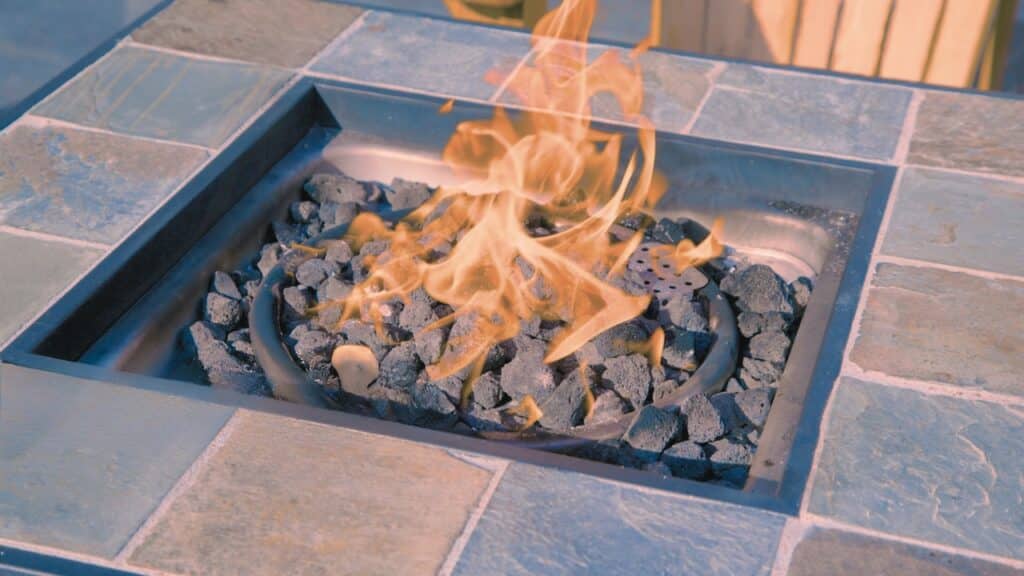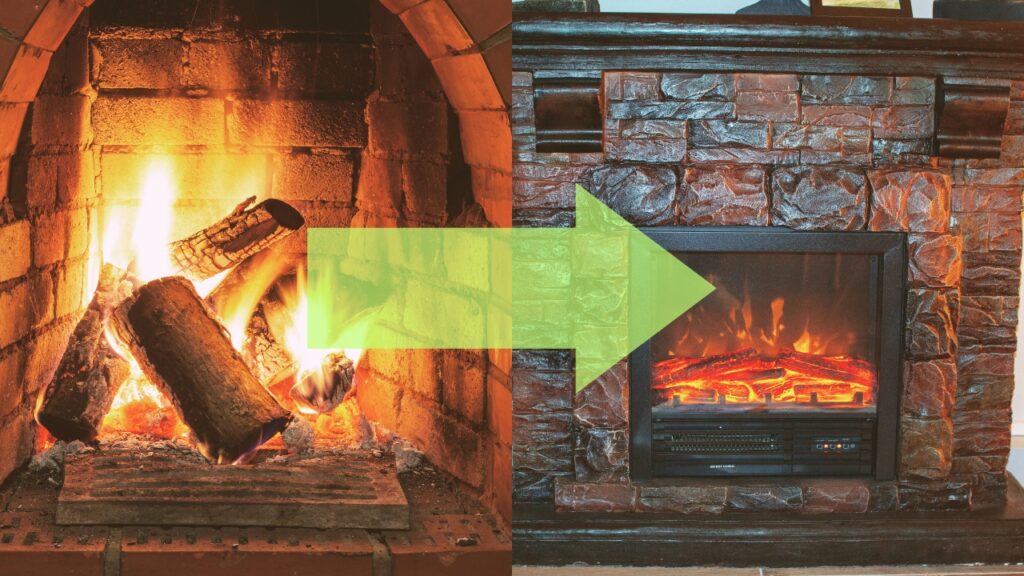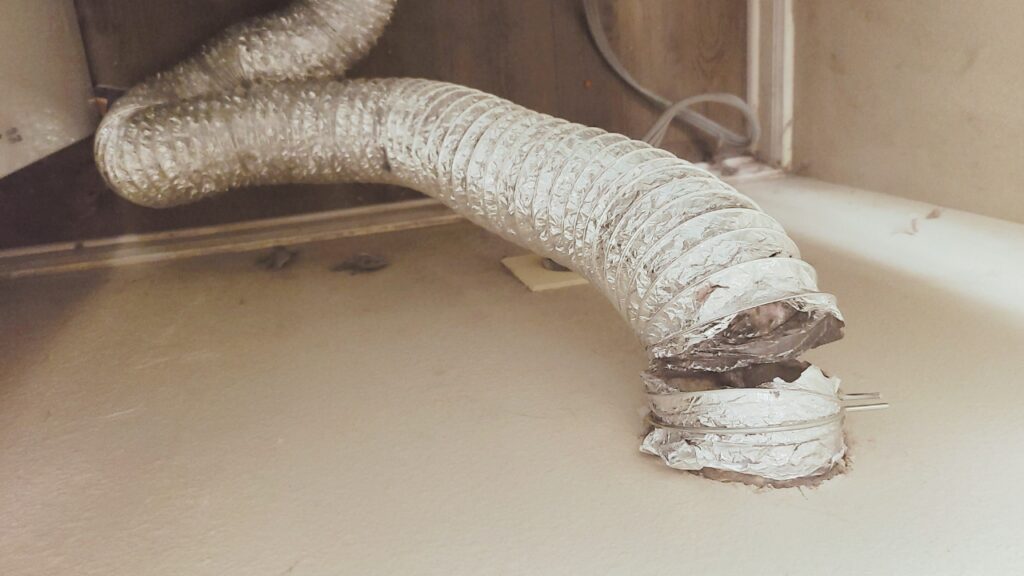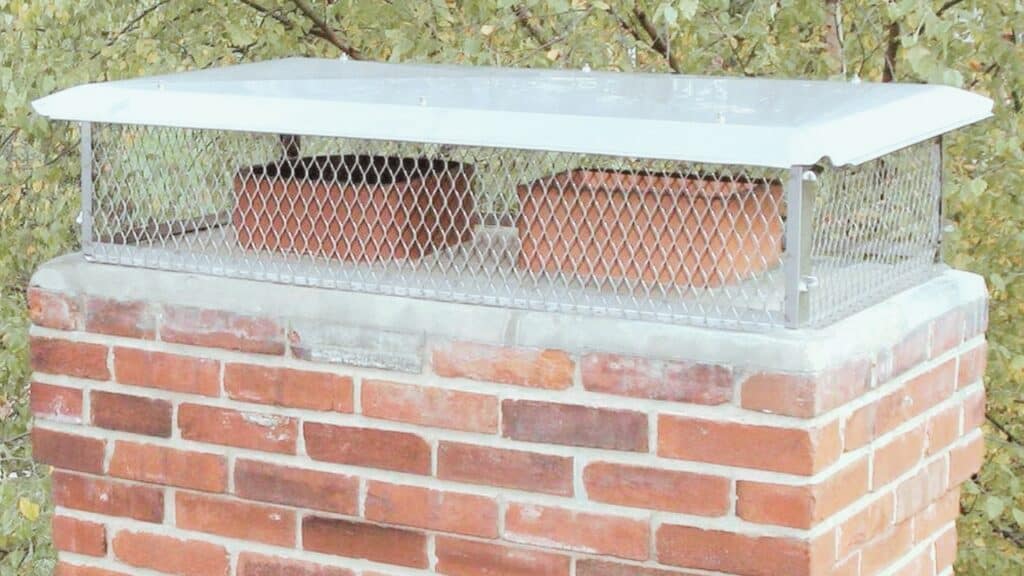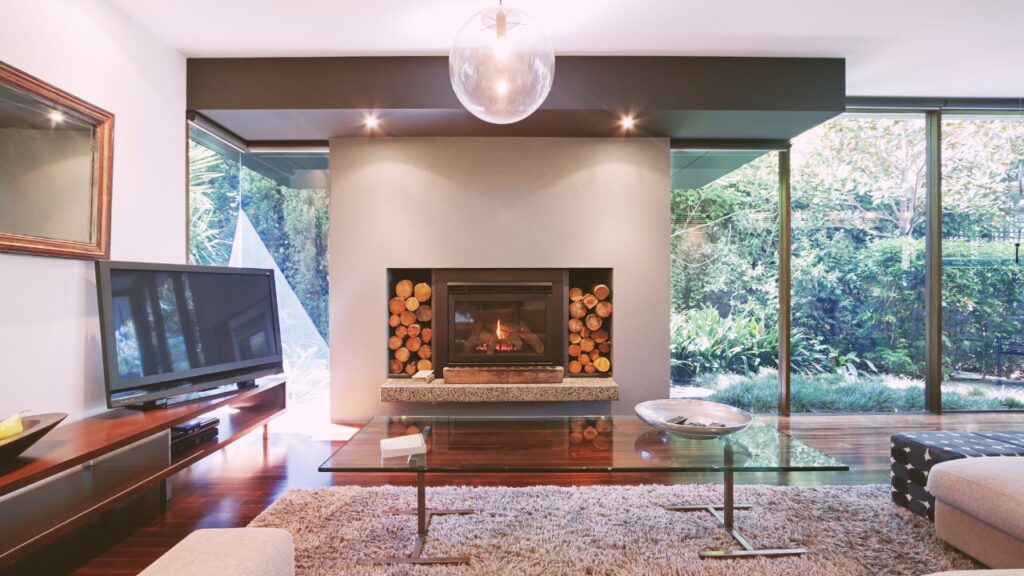“Is my chimney safe to use?” That’s a question many homeowners ask themselves. Unfortunately, not all information available on the subject is accurate.
Your chimney’s safety depends on many factors – some within your control and others out of your hands. But by being aware of the obvious warning signs, you can help ensure your chimney is as safe as possible.
Remember: it’s always a good idea to have your chimney inspected by a professional instead of trying to assess its safety yourself.
Read on to decide whether your chimney is safe and the signs to watch out for.
How Do I Know if My Chimney is Safe to Use? (What are the Warning Signs?)
Here are the warning signs that it may not be safe to use your chimney:
1. Animal Nest or Debris Buildup
Birds, bats, and squirrels are some of the many animals that might reside in your chimney. If you see any animals coming out of your chimney or hear weird noises like squeaking, screeching, or cheeping, it’s a good indication that it’s unsafe to use.
These animals can cause blockages and buildups, making it difficult for smoke to escape. They can also carry diseases that could be passed on to you and your family.
In addition, if you see any debris, such as leaves or sticks inside your chimney, this could be a sign of a blockage that could lead to a dangerous situation if you light a fire.
If you see any of these signs, we recommend calling a professional service to come out and inspect your chimney before using it again. Cleaning it yourself could be dangerous, and you want to ensure everything is safe before using your fireplace.
2. Soot and Creosote Buildup
To determine whether your chimney is safe, it is essential to check for soot and creosote buildup. Soot is the fine black powder that’s produced when wood burns.
Creosote is a black or brown tar-like substance that forms on the walls of your chimney due to combustion when wood doesn’t burn completely.
This substance is highly flammable and can cause chimney fires if it builds up sufficiently. And a chimney fire can easily lead to a house fire.
If there’s more than one-eighth or a quarter-inch of soot or creosote on the walls of your chimney, it’s time to have it cleaned.
There are three grades of creosote, each of which poses a different level of risk.
- Stage 1 creosote is the most common and least dangerous type. It is usually found in small quantities and is easily removed with a wire brush.
- Stage 2 creosote is more difficult to remove and can cause chimney fires if not cleaned regularly.
- Stage 3 creosote is the most dangerous type, as it is almost impossible to remove and can easily ignite, leading to a disastrous chimney fire.
If you have concerns about creosote buildup in your chimney, it is best to consult professional chimney sweeps.
They can assess the situation and advise you on the best course of action. Early professional assistance will save you money and keep your home safe when using your chimney. As a bonus, a professional
——
Do You Need to Hire Chimney & Fireplace Expert?
Get free quotes from qualified experts near you. No commitment required!
——
3. Smoke Draw Issues
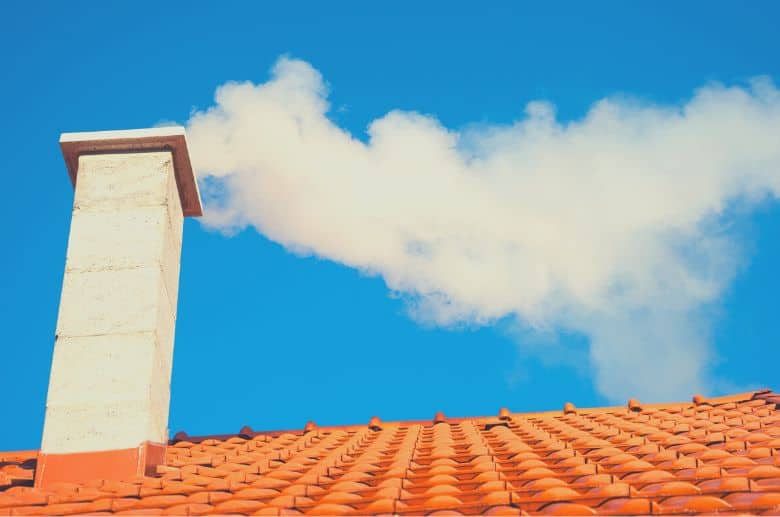
When a chimney operates optimally, the rising hot air creates a draft that pulls the smoke up and out of the fireplace. Blockages or other issues can disrupt this draft, and the smoke will start to back up into your home.
It reduces proper airflow, which is necessary to keep your fireplace burning safely.
Besides that, combustion gases and toxic fumes from the smoke can enter your home, including carbon monoxide. CO poisoning is a severe health hazard that can cause death, so it’s essential to be aware of the symptoms and get out of your house if you experience them.
These are:
- dizziness
- headaches
- nausea
- fatigue
- confusion
- irritability
If you experience these symptoms, get out of your house immediately and call 911.
4. Chimney Cap is Damaged or Missing
A chimney cap has several purposes, including keeping animals and debris out of your chimney, protecting against water, and preventing sparks from escaping.
Look for cracks or missing pieces in the cap at the top of the chimney crown, and ensure that all the pieces are securely in place. If you see daylight coming through any part, it indicates that your chimney cap needs to be replaced.
Remember that it’s essential to replace your chimney cap if it’s damaged or missing. Doing so will help you avoid costly repairs down the road. Fortunately, this replacement is an easy job for a chimney professional.
5. Water and Moisture Stains Due to Leaking Chimney
Cracks in bricks or mortar can cause chimney leakage problems. These cracks allow water to seep through, damaging the surrounding structure.
Water stains from a leaking chimney may be brown or yellow. Rust is another sign of water damage and should be addressed immediately.
If you notice a musty smell coming from your fireplace, it could indicate water leaking into the chimney.
If you notice any of these signs, it’s important to have your chimney inspected by a professional as soon as possible. Leaks can quickly lead to serious damage, so nipping them in the bud is important.
Water damage can further deteriorate the chimney structure and create an ideal environment for mold and mildew to grow.
6. Broken or Blocked Chimney Flue
According to the Chimney Safety Institute of America (CSIA), a blocked flue is one of the leading causes of chimney fires. Bird nests, fallen leaves, and creosote buildup are possible causes of blockage. If your flue is partially or entirely blocked, the smoke cannot draft correctly.
A broken or blocked chimney flue can cause dangerous gases to build up inside your home, putting you and your family at risk of carbon monoxide poisoning. Here are some signs to look for that indicate your chimney flue may need repair:
- A fire is burning in your fireplace, but the smoke is not going up the chimney
- The draft from your fireplace is not as strong as it used to be
- You can see daylight through cracks in the mortar of your chimney
- There is soot or creosote buildup on the inside of your chimney
If you notice any of these signs, having your chimney inspected by a professional as soon as possible is important. Professional chimney sweeps have the experience, tools, and materials they need to make sure your chimney and fireplace are in good working order. They will be able to determine whether they can fix the problem or if you need to have the chimney replaced.
——
Do You Need to Hire Chimney & Fireplace Expert?
Get free quotes from qualified experts near you. No commitment required!
——
7. Spalling Bricks and Masonry Discoloration or Efflorescence
Masonry damage can result from many things, including weathering, animals, and water damage. If you see any cracks, crumbling, or missing mortar, it’s essential to have it repaired as soon as possible.
Efflorescence is another sign that occurs when water evaporates from the bricks, leaving behind a white powdery substance.
This happens because the mortar between the bricks is not waterproof. When water seeps through, it dissolves minerals in the bricks and carries them to the surface.
Damaged masonry can cause your chimney to collapse, so it’s not something to take lightly. Fixing the damage with professional help can help you avoid the costly repairs of a larger project and keep your family safe from harm.
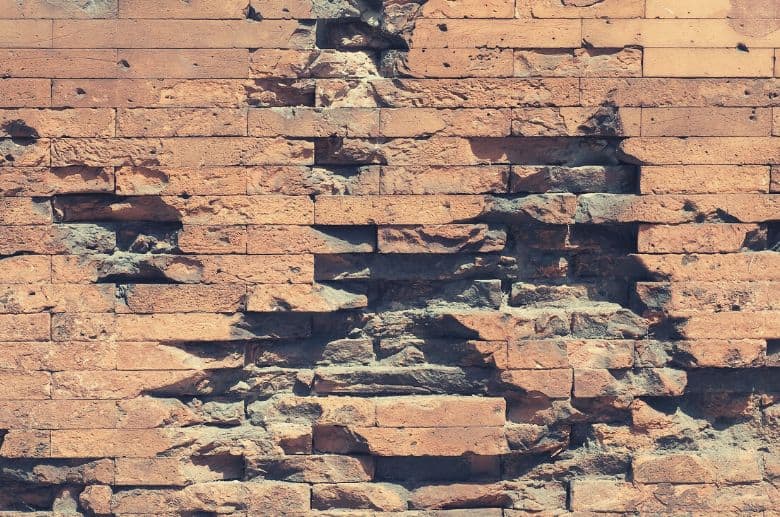
8. Leaning Chimney Damage
While a small amount of leaning is usually not a problem, a clearly leaning chimney can cause significant damage to both the structure and the integrity of the chimney.
You can easily tell if your chimney is leaning if you notice the following:
- The bricks on one side of the chimney are higher than the bricks on the other side
- There are cracks in the mortar between the bricks
- The cap or crown on top of the chimney is tilted to one side
- There is a gap between the flue and the chimney liner
- The chimney is leaning away from the house
Leaning chimney damage can lead to several problems, such as:
- The chimney could collapse, which could damage your home or injure people
- If the chimney is leaning towards your home, it could damage your roof
- Leaning chimneys can also cause cracks in the mortar or bricks, allowing water to enter you home and cause further damage
If you notice your chimney is leaning, it’s crucial to have a professional assess the damage and determine the best course of action. In some cases, professionals can repair the chimney.
However, in other cases, it may need to be rebuilt entirely. Regardless of the extent of the damage, it’s essential to get it fixed as soon as possible to prevent further damage to your home. A professional masonry contractor can give you a good estimate.
9. Worn-Out Flashings
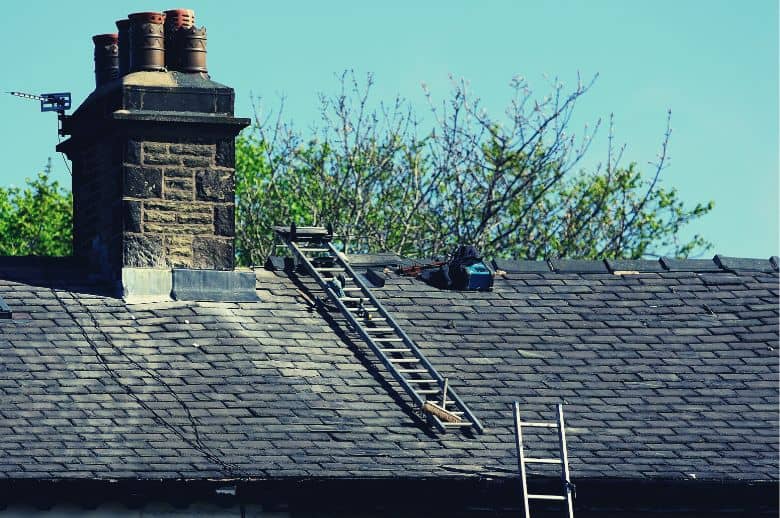
Flashings are the metal pieces that seal the gaps between your chimney and roof. Over time, they can become worn out or loose, which can cause leaks. Inspect your chimney flashing and chimney cricket for any signs of damage, and have them replaced if necessary.
Here are a few signs to watch for that indicate it’s time to replace your chimney flashings:
- Rust spots on the flashing or the surrounding area
- Gaps or cracks in the flashing
- Missing or loose nails
- Flashing that is pulling away from the chimney or roof
If you notice any leaks, make sure to have them repaired as soon as possible. Leaks can cause severe damage to your chimney and home.
10. Cracked Chimney Crown
A chimney crown is the cement cap covering the top of your chimney. Over time, the crown can become cracked or damaged due to weathering, water damage, or poor construction.
There are a few ways to tell if your chimney crown is cracked.
- The first is to look for cracks in the cement itself. These can be small or large, but if you see any cracks, it’s a good indication that the crown is damaged.
- Secondly, look for cracks in the mortar between the bricks. If you see cracks in the mortar, it’s a good indication that the crown is cracked and needs to be repaired.
If your chimney crown is cracked, have it repaired as soon as possible to avoid further damage to your chimney.
Cracks in the crown can allow water to seep into your chimney, leading to leaks and water damage. In addition, cracks in the crown can weaken the structure of your chimney and make it more likely to collapse.
Is My Fireplace Your Fireplace is Safe to Use
Besides your chimney, you must ensure that your fireplace is safe to use and in good condition before starting a fire. Here are warning signs to be aware of before you light a fire:
Damaged Fireplace Bricks or Mortar
Look for damage to the bricks or mortar of your fireplace. Over time, the constant exposure to heat and smoke can cause bricks and mortar to deteriorate.
If you see cracks or missing bricks, have them repaired as soon as possible. You can employ the Smoke Chamber Parging method. Smoke chamber parging is applying a layer of mortar or concrete to the smoke chamber to repair it and prevent further damage.
This repair is usually necessary when the original masonry has been damaged or cracked, allowing heat and smoke to escape into the home. Parging will not only improve the appearance of the smoke chamber but will also help insulate it and prevent heat loss.
Leaving the problems unrepaired can cause further damage to your fireplace and even put your home at risk of a chimney fire.
Missing or Damaged Damper
The damper is an integral part of your fireplace that helps control the airflow. If it’s damaged or missing, it can cause problems with the draft of your fireplace. This can lead to smoke and fumes being drawn back into your home instead of being vented through the chimney, potentially leading to carbon monoxide poisoning.
Having a professional inspect your fireplace to see if you’re missing a damper or notice damage to the one you have is essential. They can repair or replace the damper so your fireplace is safe.
Firebox Condensation
Firebox condensation is a common problem in wood-burning stoves. When the fire burns, it produces water vapor that condenses on the cold surfaces inside the firebox.
This can lead to problems such as rusting of the firebox and deterioration of the stove’s performance.
If you have a problem with firebox condensation, take steps to improve your stove’s ventilation and reduce the amount of moisture in the air. This will help to prevent condensation from occurring and will also help to extend the life of your stove.
Unpleasant Musty Odor from Your Fireplace
Your fireplace shouldn’t have a musty odor or soot and creosote mixed with water. If it does, it’s a sign that mold or mildew may grow inside it.
A musty odor can occur if the fireplace isn’t used regularly or isn’t correctly venting smoke out of the chimney.
If you smell a charcoal-like stench near your wood fireplace, that’s a cause for concern too. The smell usually signifies a buildup of soot and creosote, which can be highly flammable.
To get rid of the odor, you need to have your chimney cleaned by a certified professional. Depending on the severity of the problem, they may recommend a level 2 or 3 inspection.
Risks of Using Unsafe Chimneys and Fireplaces
As we’ve explained, chimney safety and fireplace checkups are essential to avoid accidents. But what are the risks of using an unsafe fireplace or chimney?
- House Fires – Cracks in your fireplace or chimney can let heat escape and start a fire. That’s why it’s essential to have any damage repaired as soon as possible.
- Carbon Monoxide Poisoning – We’ve touched on CO poisoning before, but it’s worth mentioning again. If your fireplace or chimney is blocked, the CO fumes can back up into your home and cause poisoning. CO poisoning can be deadly, so it’s essential to ensure your fireplace and chimney are clear before using them.
- Smoke Inhalation – If you have a blocked chimney, the smoke can go back into your home and cause you to breathe it in. This can be dangerous for young children, the elderly, and people with respiratory problems.
- Chimney Collapse – Brick or water damage can cause the chimney to lean, crumble and potentially fall through your roof. This is why it’s essential to have your chimney regularly inspected by a professional. They’ll be able to identify any damage and ensure it’s repaired before it becomes a problem.
——
Do You Need to Hire Chimney & Fireplace Expert?
Get free quotes from qualified experts near you. No commitment required!
——
Fireplace and Chimney Safety Tips
Now that we’ve gone over some risks of using an unsafe fireplace or chimney, let’s discuss some safety tips you can follow to avoid them.
1. Burn Seasoned Wood: Green or unseasoned wood contains too much moisture and can cause creosote to build up in your chimney. This can lead to a chimney fire.
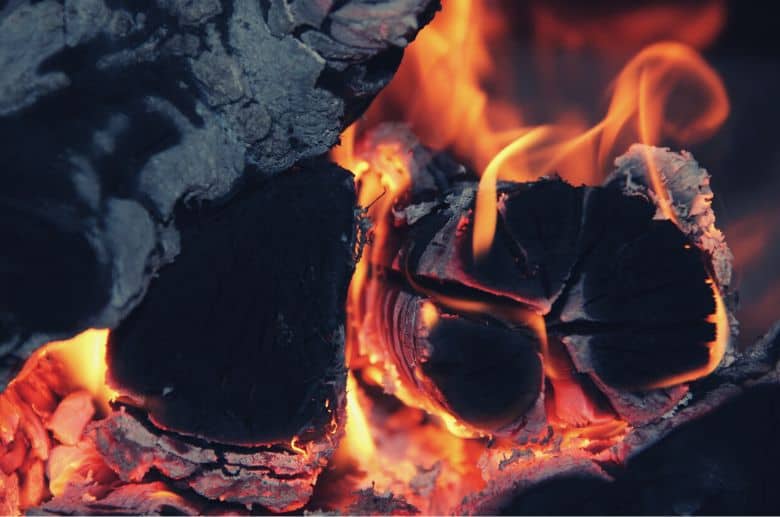
2. Use a Fire Screen: A fire screen will help keep embers and sparks from flying out of the fireplace and starting a fire.
3. Clean Fireplace Ash after Every Use: You should keep the hearth clean and remove the fireplace ash after every use. Ash can build up and block your fireplace, which can be a fire hazard.
4. Ensure Your Damper is Open When Using Your Fireplace: The damper allows air to flow into the fireplace and prevents smoke from returning to your home.
5. Inspect and Clean Your Chimney Regularly: The National Fire Protection Association recommends having your chimney inspected and cleaned at least once a year by a licensed professional. This will help prevent creosote buildup and reduce the risk of a chimney fire.
6. Install Carbon Monoxide Detectors: You should also install carbon monoxide detectors in your home if you have a fireplace or wood-burning stove. The sensors will alert you if there are high levels of CO in your home, which can be dangerous.
7. Keep Your Fire Extinguisher Next to the Fireplace: A chimney fire extinguisher is a fire extinguisher specifically designed for use on chimney fires. You should keep one next to your fireplace in case of an emergency.
8. Waterproof Your Chimney Before the Winter: Finally, waterproof your chimney before the winter. This will help prevent water from getting into your chimney and causing damage.
Waterproofing your chimney will also help keep snow and ice from building up, which can be a fire hazard.
9. Open the damper before lighting a fire: The damper is the door that opens and closes to allow air to enter the fireplace. Make sure it’s open before lighting a fire. Otherwise, smoke could fill your home.
Who Can Check if My Fireplace is Safe to Use?
A professional chimney sweep can inspect your fireplace and chimney to ensure they’re safe to use. The Chimney Safety Institute of America (CSIA) recommends having your chimney inspected yearly.
During an inspection, the chimney sweep will look for any damage or blockages that could prevent proper ventilation. They’ll also clean the chimney to remove any soot or creosote buildup.
If you live in an older home, it’s crucial to have your chimney inspected before using it. Older homes often have fireplaces that weren’t built to today’s safety standards.
In some cases, the fireplace may need to be repaired or replaced before you can use it safely.
Wrap Up
So, is my chimney safe to use? As explained above, it depends on several factors. However, ensuring your chimney is inspected and cleaned regularly is crucial to avoid any problems.
If you’re not sure if your fireplace or chimney is safe to use, it’s always a good idea to have it inspected by a professional. They’ll be able to identify potential problems and ensure they’re repaired before they become a hazard. Don’t forget to have an annual maintenance as well to guarantee that your chimney and fireplace are always safe to use.
We hope you enjoyed this article and found the lists of fireplace and chimney safety tips helpful. Stay safe and ensure your fireplace and chimney are in good working condition. Thanks for reading!


